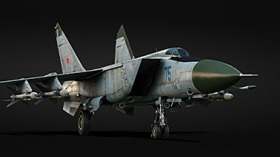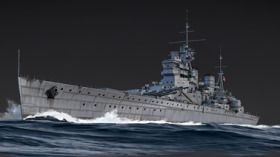
- For PC
- For MAC
- For Linux
- OS: Windows 10 (64 bit)
- Processor: Dual-Core 2.2 GHz
- Memory: 4GB
- Video Card: DirectX 11 level video card: AMD Radeon 77XX / NVIDIA GeForce GTX 660. The minimum supported resolution for the game is 720p.
- Network: Broadband Internet connection
- Hard Drive: 23.1 GB (Minimal client)
- OS: Windows 10/11 (64 bit)
- Processor: Intel Core i5 or Ryzen 5 3600 and better
- Memory: 16 GB and more
- Video Card: DirectX 11 level video card or higher and drivers: Nvidia GeForce 1060 and higher, Radeon RX 570 and higher
- Network: Broadband Internet connection
- Hard Drive: 75.9 GB (Full client)
- OS: Mac OS Big Sur 11.0 or newer
- Processor: Core i5, minimum 2.2GHz (Intel Xeon is not supported)
- Memory: 6 GB
- Video Card: Intel Iris Pro 5200 (Mac), or analog from AMD/Nvidia for Mac. Minimum supported resolution for the game is 720p with Metal support.
- Network: Broadband Internet connection
- Hard Drive: 22.1 GB (Minimal client)
- OS: Mac OS Big Sur 11.0 or newer
- Processor: Core i7 (Intel Xeon is not supported)
- Memory: 8 GB
- Video Card: Radeon Vega II or higher with Metal support.
- Network: Broadband Internet connection
- Hard Drive: 62.2 GB (Full client)
- OS: Most modern 64bit Linux distributions
- Processor: Dual-Core 2.4 GHz
- Memory: 4 GB
- Video Card: NVIDIA 660 with latest proprietary drivers (not older than 6 months) / similar AMD with latest proprietary drivers (not older than 6 months; the minimum supported resolution for the game is 720p) with Vulkan support.
- Network: Broadband Internet connection
- Hard Drive: 22.1 GB (Minimal client)
- OS: Ubuntu 20.04 64bit
- Processor: Intel Core i7
- Memory: 16 GB
- Video Card: NVIDIA 1060 with latest proprietary drivers (not older than 6 months) / similar AMD (Radeon RX 570) with latest proprietary drivers (not older than 6 months) with Vulkan support.
- Network: Broadband Internet connection
- Hard Drive: 62.2 GB (Full client)
To make things more clear we will show how tank is damaged. We use special damage adjustment system.
Let us hit T-34 with a 75 mm KwK40 using cavity AP shell with PzGr39 balistic and protective cap from a short distance.

========================== White line is shell’s motion vector (bottom left corner), yellow dot - a place where shell hit the armor, light blue lines - cone of armour shards. Tail fuse of the shell went off and the shel detonated approximately in the center of the fighting compartment. Yellow circle is HE damage radius, green sphere is fragmentation damage radius. Red traces from the center of the explosion - fragments that hit vital modules.
Also screenshot shows silhouettes of the significantly damaged modules - breech part of the gun and crew members(red boxes), turret ring engine and ammo rack - green boxes . Crew members were critically hit and are knocked out. Tank combat efficiency is significantly reduced but it is not yet destroyed since one of the crew members is still alive. Now let’s make a second shot.
Second shell also hit the front armour, penetrated it and exploded inside - tank is destroyed.
Ammunition
- Armour-piercing kinetic-energy (including subcaliber)
- High-explosive anti-tank
- High-explosive fragmentation
 |
| Detachable equipment of PzKpfw IV Ausf.F2 |
Armour-piercing shells
- breach check - if caliber is everal times higher (10) than plate thickness it breaches the plate automatically.
- if there is nobreach - bound check. Bound shot is possible if the angle is 30 degrees or less. The less the angle the higher is the chance of the bound. 0 degrees angle means 100% bound shot.
- If there is no bound shot - then goes penetration check, following characteristics are taken into account - current penetration value, armour slope angle, and slope angle of the machine itself, angle of impact. Armour thickness is calculated and there goes a check whether a shell can or can not penetrate the armour.If not and the shell has explosives - it detonates and attachments can be damaged.
- If there is penetration the shell deals the damage to the armor, loses penetration value and kinetic damage proportionally to armor thickness and goes further. Also each kinetic shell creates a shard cone that can damage modules and crew in the sector.
 |
| Stug III Ausf.F shooting PzGr 39 shell |
An important thing for players to know is that even a shell without explosives damage modules not like “laser beam” on its trajectory but also in some radius. Thus if AP shell hits a spot between a driver and radio operator secondary shards will most likely damage both crew members while the shell itself if it has enough penetration value may even reach the engine..
High-explosive anti-tank shells
Fragmentation shells
This kind of ammunition is very similar to the aircraft carried bombs and rockets as well as automatic cannons’ HEF (high-explosive fragmentation) shells that are already present in the game. They generate spheres of explosive and splinter damage; if the numerical values of the blast wave strength are high enough, it penetrates the armour and deals damage. Medium and low caliber shells of this kind may destroy light vehicles with bullet-proof armour (like the Flakpanzer I anti-aircraft SPG). Higher caliber HEF shells (122mm upwards) are needed to destroy heavy and medium tanks.
Thus it is dramatically important to choose ammunition type according to its armour penetrating and explosive properties. Knowing and using advantages of different shell types against different opponents may turn the tide of battle.Thus it is dramatically important to choose ammunition type according to its armour penetrating and explosive properties. Knowing and using advantages of different shell types against different opponents may turn the tide of battle.
We gave you a basic description of one of the most important game systems - the damage model. Join discussions on the Official Forum and feel free to ask your qustions and share your ideas.




